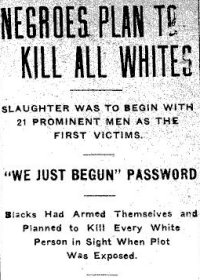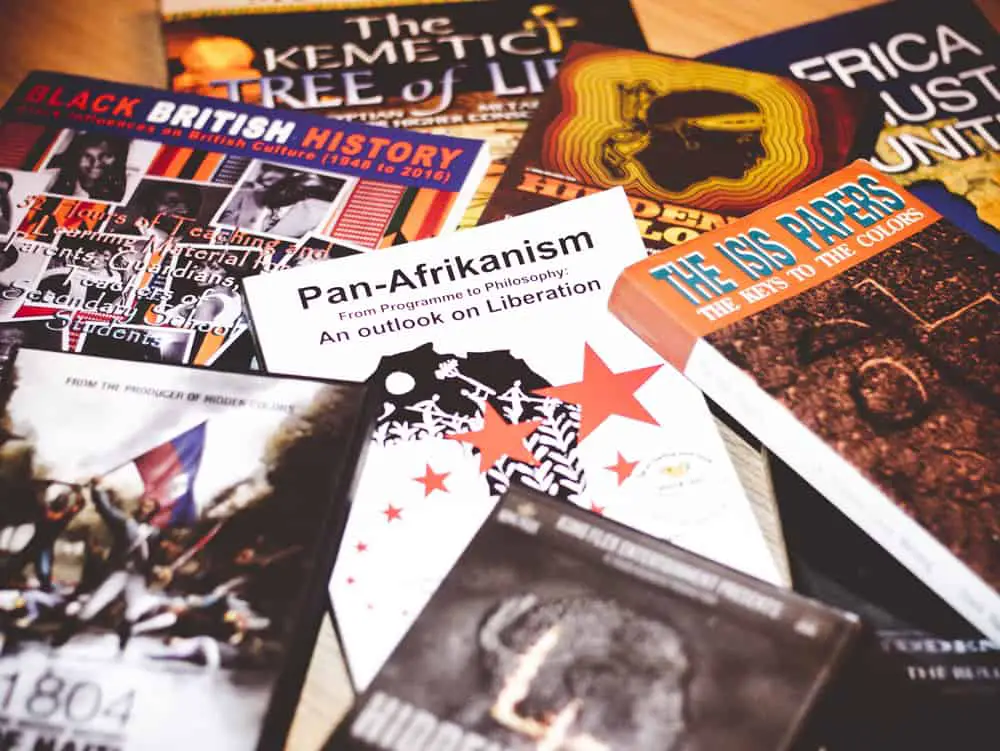In this post, we discuss 7 thriving black communities; all of which were destroyed and came to an end prematurely.
While the black community members back in the 20th century served as significant contributors to the huge economic success enjoyed till the present-day America, they were a subject of victimization to their fellow ‘uncolored’ men.
Their only sin was being born in black skin – this was abhorrently unforgivable. The African-Americans fondly tagged ‘colored men’ have been a subject of racial discrimination, segregation and immense hostility right from an unnamed time in history.
However, the stage-play that brought this situation to prominence was in the 19th and 20th centuries.
Despite the hard work and great achievements of a fraction of the black population in the educational and political atmosphere, the commonly misrepresented image of a colored man back in the days was that of a violent man who should not have any right or status whatsoever in the social stratification of the state.
Even before this set of career-inclined blacks attained the level of successes they had, they were subjected to terrifying resentment and ridicule among their white peers – they thought: a black man does not deserve to be educated, neither does he have any right.
On the other side, those who were illiterate, majorly independent farmers were still exploited and cheated – although in a ‘legally-accepted way’ at the time. Some of these illiterate blacks even joined the military to fight for the country, to prove their dedication and probably get forgiven for a sin they did not commit.
All these proved abortive. The opinion of their foes never changed towards them.
The worst happened where we least expected – the police departments that were meant to ensure every individual’s safety in a community – without prejudice, flipped. There were several cases where a riot would break out between a white man and a black man, and only the black man would be arrested by the police.
Even the governments were not left out. The state legislature approved laws – Jim Crow laws – that disenfranchised most black men, taking away their political decision-making power. This left a question engraved in the black population’s hearts: Are we in the wrong country?
It is heartbreaking and unfair to the black race that these notable historical events are not taught or included in our institutions’ teaching curriculums and even high school history classes. While spending more time on selective events that ignore black history. Is that not systematic racism?
In subsequent headings, we shall state some of these events that should never be forgotten in America’s history.
TULSA OKLAHOMA Race Massacre

This event, named ‘the single worst incident of racial violence in America history’ happened in Tulsa, Oklahoma, on the 31st of May and 1st of June, 1921. It was a display of great aversion between the white Tulsans and the most prosperous black community in America, living in the Greenwood District known as the ‘Black Wall Street.’
It all started from a black 19-year old Dick Rowland, who was a shoe-shiner at a Main Street shine parlour. At the time, he had a tinkling sensation and needed to use the convenience, he had to use the nearby facility allotted to blacks only on the top floor of the Drexel building at 319 South Main Street.
On getting to the elevator that would take him to the top floor, he met Sarah Page, a white 17-year old elevator operator, on duty. Suddenly, a yell was heard from the direction Rowland and Sarah was and a clerk who was working at Renberg’s – a clothing store on the first floor – headed towards them only to see Rowland hurrying his way out. The clerk then called the authorities to report the situation.
When the authorities arrived, the situation was briefly examined. Several speculations sprung up regarding the unusual meeting between Rowland and Sarah.
The belief was that Rowland harassed Sarah. On a critical look at the situation, it was Memorial Day, most stores were closed. How then did they meet?
Do they know each other? Were they lovers? But the black neighbours avowed only a claim, that Rowland was not capable of rape. Along the investigation, Sarah said Rowland grabbed her arm. The police then concluded that the case was less than an assault. Rowland could be assumed to be free.
Surprisingly, on the morning of the following day, Rowland – who fled to his mother’s house in the Greenwood neighbourhood – was arrested by Henry Carmichael, a white detective, and Henry C. Pack, a black patrolman. They took him to Tulsa city jail at first, then to Main. He was to be tried.
Along the line, some white men planned to lynch him. They even went to the extent of asking the judge to release Rowland to them during his trial. In response to this, the black community reacted by gathering together to prevent them.
Things escalated later on that day; the blacks started firing warning gunshots in the air. Upon seeing this, the whites started shooting at the blacks. That was the inception of the massacre.
Several white supremacist groups participated in the riot. The prominent Ku Klux Klan was actively involved, too. In the long run, hundreds of casualties were recorded and huge properties were destroyed – as there was no precise number recorded: several media outlets only came out with different estimates.
The police department came in after the incident subsided and rounded up the remaining blacks. Those of which, were indicted.
The event that followed was that the Tulsa Tribune completely removed the occurrence from its records at the time. Several attempts were made to wipe the massacre off the records. Little did we know that the attempts to erase this history started from the time it happened.
ROSEWOOD FLORIDA Race Massacre

Rosewood massacre started in January 1923 and went on for several days till the city was burned to the ground. People were killed, and properties were destroyed, based on an accusation of a white woman named Fannie Taylor.
She claimed that a black man came into her house, assaulted her and also attempted to take her baby. The white community at the time misrepresented the news as a rape case.
During the same period, a prisoner from the chain gang, Jesse Hunter, had escaped from prison. So there were speculations that Jesse Hunter was the assaulter.
Thus, the Sheriff of the county police and some 400 white men set out on an investigation using search dogs. one of the dogs was manipulated by one of the Sheriff’s men. The dog picked a trail to the home of Aaron Carrier, Sarah’s nephew – Sarah was Taylor’s laundress. Aaron was tied to a car and dragged to Sumner for protective custody.
At Sumner, everyone was still gathered, both black and white, to see the end of Aaron’s case. Then the angry white mob, acting based on the fact that no quick judgment was dished out yet, pounced on a local blacksmith named Sam Carter and tortured him into admitting that he hid the escaped prisoner.
In the process, an unknown identity shot Carter in the face. They mutilated him and hung him in a public area, to pass a warning message to the blacks.
The whole process kept escalating right from there. They annihilated the house of Carrier, burned down the black churches and companies in Rosewood. The blacks had to flee the city.
As we have seen in Tulsa’s case – the government covered the story up and tried to wipe it from their records (history). The black community had to start their lives all over in other Florida cities they settled in. Few stayed after being assured they would be safe to work.
WILMINGTON NORTH CAROLINA Massacre of 1898

The Wilmington event occurred in the year 1898 but had its roots deepened down as far back as 1860. It was a case of white supremacy, political infuriation and the rise of instability in the state.
In this period, before the Civil War, Wilmington, the largest city in North Carolina at the time, consisted mostly of blacks. Both the slaves and the freedmen, doing both menial and skilled jobs.
Moving forward to the post-civil war, the black community still enjoyed a great source of livelihood. They held a significant measure of the city’s enterprises and were the majority of voters.
When this was noticed by some of the white people in town, they came up with the White Supremacy Club.
The nine men:
- Hugh MacRae
- J. Allan Taylor
- Hardy L. Fennell
- W. A. Johnson
- L. B. Sasser
- William Gilchrist
- P. B. Manning
- E. S. Lathrop and,
- Walter L. Parsley
Were at the forefront of the conspiracy to “re-take control of the government, reverse the law, empower the white and reduce the black dominance to ashes” called on whites from all over the country for help.
Although they faced opposition from prominent black men in the community, they succeeded with their plan.

The whole matter escalated during the White Supremacy Convention. The blacks were accused of being rude and subtle in their criminal activities. Their judgment was made in the convention though not persecuted.
But were ambushed. Their properties were destroyed, their children were kidnapped, and their churches were burnt down by the people from the white supremacy club meeting.
FORSYTH COUNTY, GEORGIA Racial Cleansing

In Forsyth Ga, in the year 1912, black businesses and churches were burned down during what was described as a nightmarish, white terror attack. White supremacists ran out the entire black population in the area, which was around 1,100 black men, women and children.
Those 1,100 were roughly 10% of the population at that time. This entire episode was the response to an all too familiar, alleged rape and beating of two white women by a black man.
There were three public executions of one black man and two black teenage boys. Rob Edwards, the black man, and first to be executed, was lynched immediately in what was known as a ‘community lynching’.
Later, following a very brief trial, the two teenage boys, Oscar Daniel and Ernest Knox, were also lynched by the county. These community lynchings garnered thousands of viewers.
Some showed up just to watch, others joined in and participated by shooting at the corpses. Subsequently, the town became whites-only up until the mid-1980s
The truth of this story was kept hidden for many years and the version passed around was that a white girl was attacked by black men and the white community banded together, in solidarity, and ran them all out, to protect white women.

BROOKLYN CHARLOTTE NORTH CAROLINA Race Eradication
In the economic-splendour city of Brooklyn, the environment was good and lively. The majority of the population were dominated by smart, thriving, and well educated black Americans who were delivering good services to the community, making Brooklyn an independent city.
According to an eye-witness, out of the blue, a policy mandated the evacuation of black residents out of Brooklyn. Speculations were made that it was just for a short while. Little did they know that it was a total send-off. The outcasts were left with no choice than to start life all-over. It was a challenging situation for them.
Please share this post. Sharing is caring 🙂
JENKINS COUNTY, GEORGIA Riot 1919
This event occurred between a sheriff – who unlawfully detained a black man named Edmund Scott, and an ordinary black-citizen named Joe Ruffin, who was trying to bail Edmund Scott out.
Joe Ruffin, together with his son, was driving to church for a celebration but had to stop due to the congestion on the road. A car then parked beside them, containing the Sheriff, two other officers and Edmund Scott – who was just arrested for carrying a pistol. Joe Ruffin, out of his heart’s kindness, then decided to bail Edmund Scott out. He attempted to pay the $400 amount with his chequebook. The Sheriff rejected this offer, saying they needed cash, knowing that that much cash was hard to get access to from the banks, on a Sunday.
On hearing they were taking Scott in nonetheless, Joe reached out to Scott to pull him out. Before he could successfully execute his plans, the Sheriff took out his gun and hit Joe across his face with it, and he fell unconscious.
Joe’s son, Louis, who was just discharged from the US army, assuming his father has just been killed, drew out his gun and shot at the Sheriff, killing him. In the fire exchange, Edmund Scott was also killed and another officer was wounded. As a result, Joe’s Son beaten to death.
The news got out to the white community, and they sought after the Ruffins for revenge. They burned down the church, Joe’s car and Joe’s other two sons were also burned to death.
When Joe realised he was going to be lynched, he turned himself in. Following this, white mobs stalked the county for days and burned down another seven churches.
ELAINE ARKANSAS Massacre

After the massacre, state officials concocted an elaborate cover-up, falsely claiming that blacks were planning an insurrection
On a fateful day, the black sharecroppers of Elaine, Arkansas, planned to form a union. This was set up to combat the inhumane treatment they were subjected to by the landowners whose lands were used for farming. This resulted from their inability to understand legal procedures, as the majority were illiterate.
Their landowners cheated them, sold them off a large amount of the farm yields and give them a substantially lower sum.
On hearing this, the white landowners acted against the motion by sending three of their men to disrupt the meeting – as that was not the first time they disrupted any union of black sharecroppers. In the process, gunshots were exchanged between the white representatives and the black community.
A white policeman was among the representatives sent by the white landowners. He was shot in the process, and this led to his death.
This event also led to the persecution of many black men and women. The white community sent hundreds of men to tear Elaine to the ground. Hundreds of black-Americans were killed, and a considerable number of properties were destroyed. About 285 men were also arrested.
The Importance Of Teaching About These Events
There are several other racial violence events that resulted in the destruction of black communities and everything they had built. Some we could not mention Red summer race violence chain of events, Seneca race violence, etc.
All of them, together with those described in this article, are in many ways similar. The black-Americans were either exploited, maltreated or prosecuted for building their own successful communities or standing up against oppression.
These things should be taught and schools should consider inculcating these lessons history has presented us into students learning. This will equip this generation and the coming ones to understand their past and prevent looming tribulations that may befall the country in the future – as we are already seeing the traces.
It is also important for black children, specifically, to see these amazing efforts of their ancestors and what they were able to achieve and build for themselves. They didn’t ask anybody for handouts they just built. In the end, it was none other than jealousy and fear that destroyed them.



